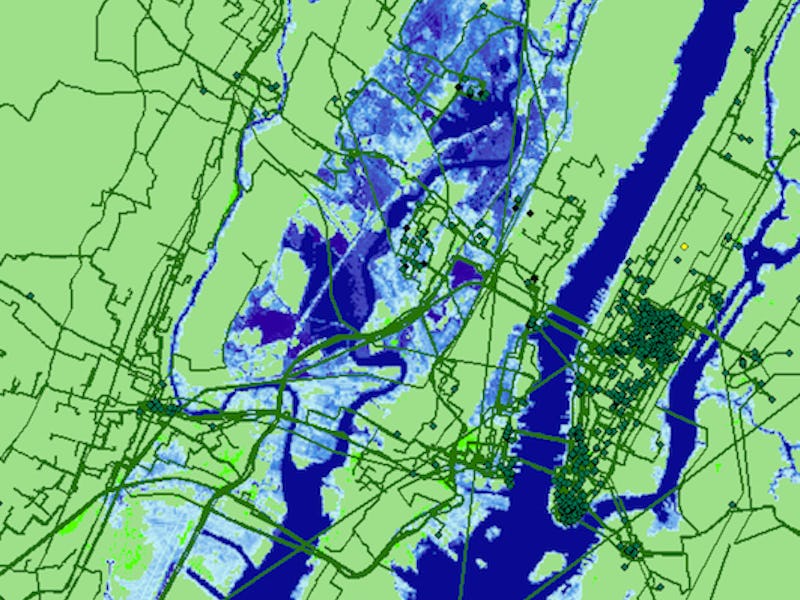Rising Seas Will Take Out Internet Infrastructure Far Sooner Than We Feared
"The expectation was that we'd have 50 years to plan for it. We don't."

The failure to address infrastructure shortcomings in the face of rising sea levels due to climate change may catch up to us far sooner than we feared. In fact, crucial internet infrastructure will be imperiled by rising sea levels within the next 15 years, according to a new peer-reviewed paper from researchers at the University of Oregon and the University of Wisconsin-Madison.
In the first major study on climate change’s impact on the internet, researchers estimate that some 4,000 miles of buried fiber-optic conduit will be buried by the year 2033, with nearly 1,100 traffic hubs completely surrounded by water. These buried fiber-optic cables are water-resistant, but not waterproof like their marine cable cousins. Most of them are installed near coastlines anyway, which means it only takes a slight climb in global sea levels to put crucial infrastructure in danger.
“The expectation was that we’d have 50 years to plan for it,” said Paul Barford, a professor of computer science at UW-Madison in a statement. “We don’t have 50 years.”
Long haul fiber cables (green) and metro fiber cables (black) shown next to rising sea level projections (blue).
As you might expect, a lot of the most vulnerable infrastructure is concentrated near large coastal cities like Miami, New York, and Seattle. Though most of these cables were laid down within the last 30 years, Barford and his team say no thought was given to climate change. That means the effects are unlikely to be contained to just those three cities, as they’re clustered around where US infrastructure connects to the global grid.
“This is a wake-up call,” Barford said. “We need to be thinking about how to address this issue.”
To get a sense of what these future outages will look like if urgent infrastructure upgrades go unaddressed, we only need look to Hurricane Sandy in 2012, when nearly nine million people lost power as far west as Illinois, according to a Department of Energy report. Internet outages doubled, according to research from the University of Southern California, and that’s despite a round-the-clock effort to keep 60 Hudson Street — a 1929 building that remains one of the world’s most important internet hubs — operational throughout the storm.
The bad news doesn’t really stop there. Efforts to mitigate the impact of rising seas through by erecting sea walls, for example, are unlikely to do any more than buy us a little time. Safeguarding the internet for the next generation, the researchers say, will likely require an overhaul.
We’re not sure if you’ve heard, but it turns out this internet thing is pretty crucial to the global economy. McKinsey estimated that the internet economy alone was worth roughly $8 trillion in 2011, and accounted for about a fifth of the GDP growth in the world’s largest economies.